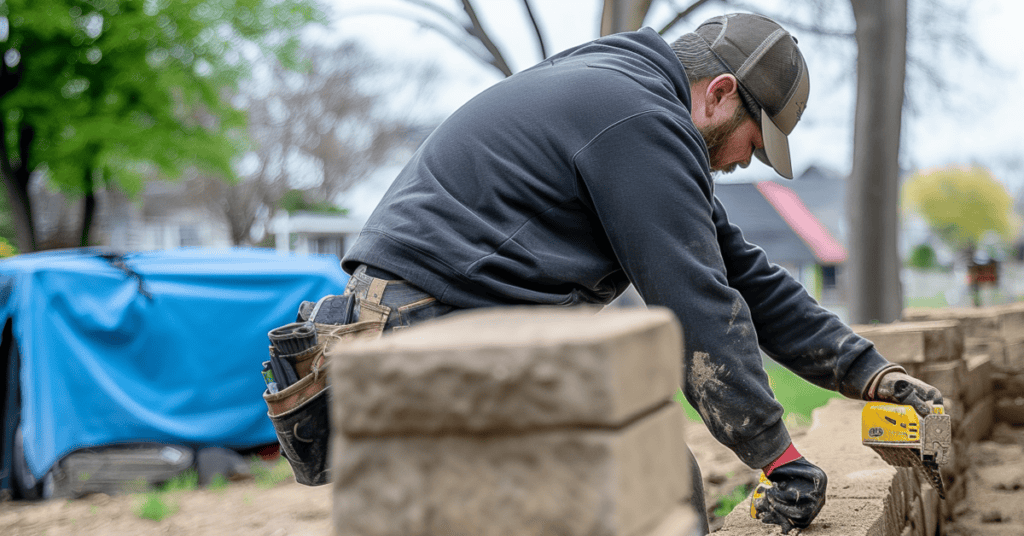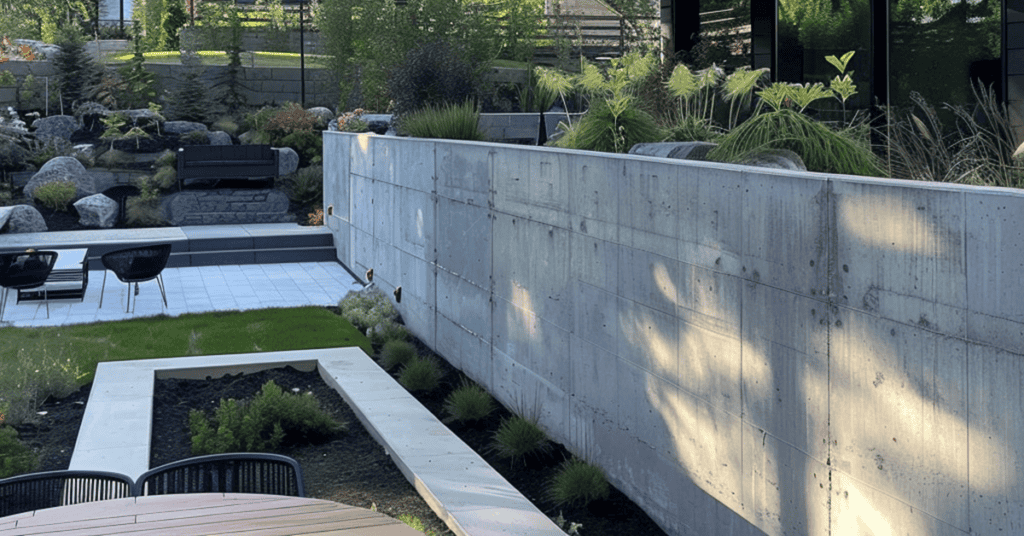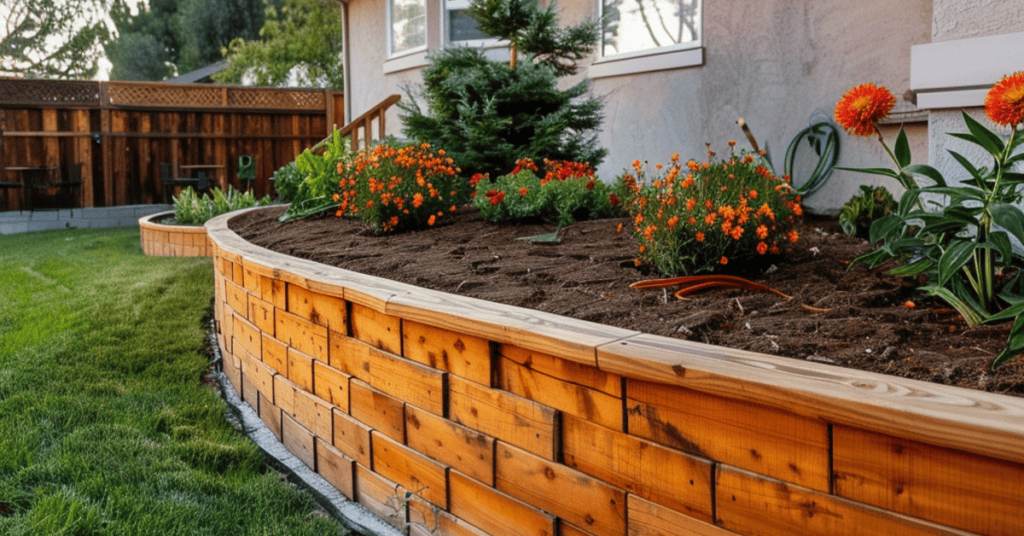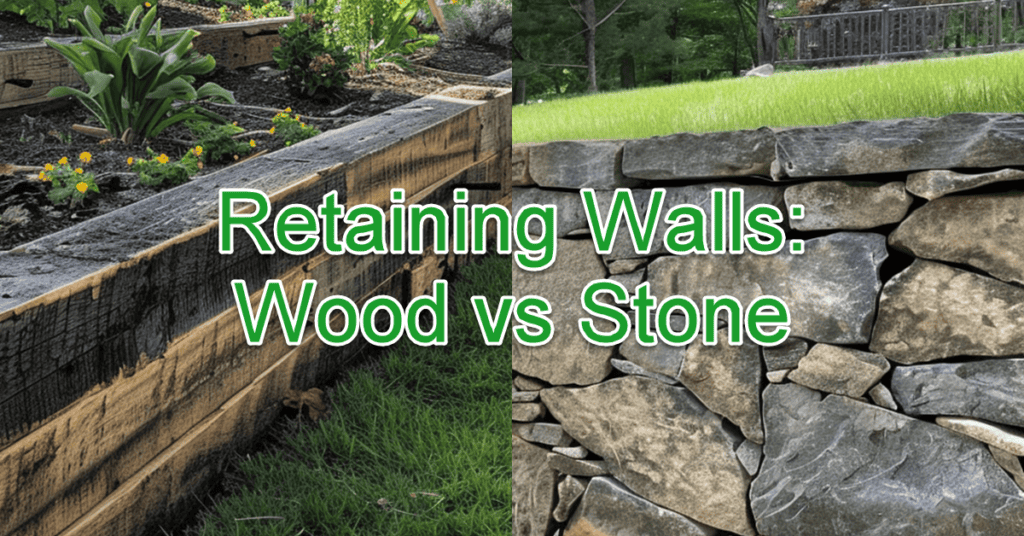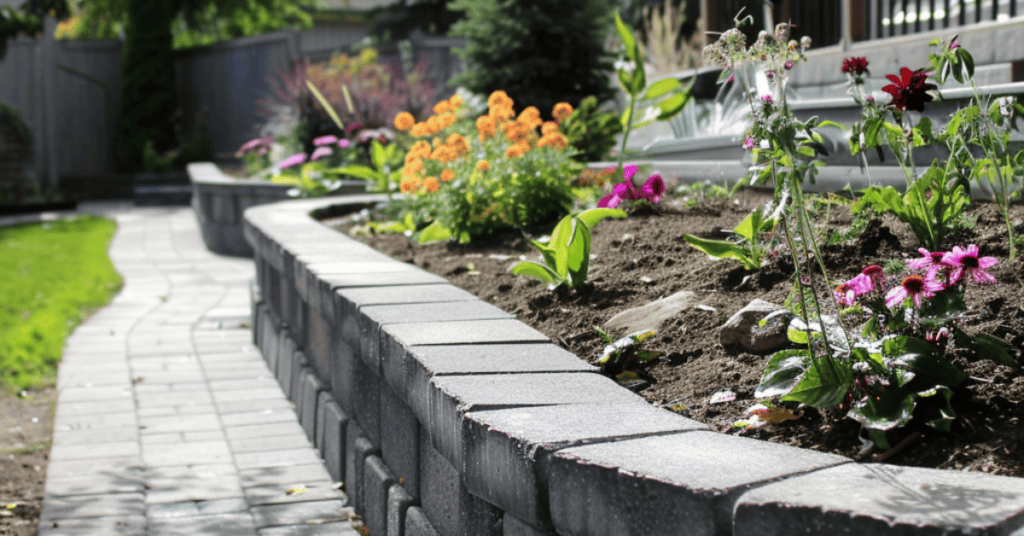An overview of Interlocking Retaining Wall Blocks
Interlock blocks provide a mortar-free solution ideal for constructing functional and aesthetically pleasing retaining walls. They offer various advantages including ease of installation, durability, and versatility in design options.
They are used to build gravity retaining walls which hold back soil or other materials. The interlocking design ensures stability and strength, making them perfect for slopes and garden beds. These blocks often have a lip or groove system enabling them to lock securely in place.
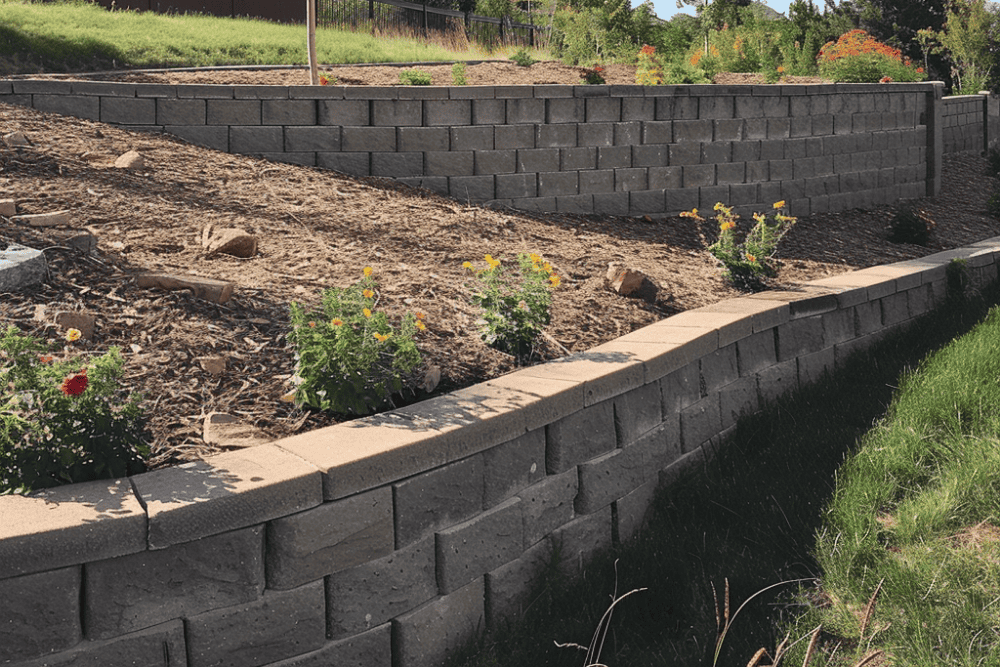
A Retaining Wall with Interlocking Concrete Blocks
Advantages of Interlocking Retaining Wall Blocks
One key advantage of these blocks is that they are mortar-free, simplifying the construction process. They are also known for their durability and can withstand various weather conditions. Additionally, interlocking blocks help in quicker installation due to the easy-to-align design. They can also be disassembled and reused, adding to their sustainability. Moreover, they create an aesthetically pleasing look, enhancing garden landscapes and outdoor spaces.
Notional Version of Interlocking Concrete Blocks
Retaining Wall Block Manufacturers
Allan Block
Allan Block is a leading manufacturer of segmental retaining wall systems. They offer a wide range of interlocking concrete block options designed for both residential and commercial applications. Allan Block’s systems are known for their ease of installation, durability, and aesthetic appeal. Their product lines built specifically for retaining walls includes the following collections designed specifically for retaining walls:
- AB Collection
- AB Europa Collection
- AB Fieldstone Collection
- AB Aztec Collection
- AB Metropolitan Collection
While all of the above options are designed for retaining walls, Allan Block also has interlock block options available for garden walls, patio walls and privacy fences.
Keystone Retaining Wall Systems
Keystone Retaining Wall Systems is renowned for its patented interlocking pin system, which enhances the stability and strength of their retaining walls. They offer a variety of retaining wall solutions, including standard, large-scale, and specialty blocks. Keystone’s products are used in a range of projects from small garden walls to large infrastructure projects.
Versa-Lok
Versa-Lok interlocking blocks provide homeowners with a solid, and versatile segmental retaining wall system. Their blocks are designed to be interlocking, which allows for flexible design options, including curves, corners, and steps. Versa-Lok is known for its ease of installation and ability to create structurally sound walls without the need for mortar.
Anchor Diamond
Anchor Wall Systems offers a comprehensive range of retaining wall products that cater to various applications, from residential landscaping to large commercial projects. Their products are designed for durability and ease of installation, featuring unique locking mechanisms and aesthetic versatility.
RediRock
Redi-Rock specializes in large, precast retaining wall blocks that mimic the look of natural stone. Their systems are designed for quick installation and are suitable for both structural and aesthetic applications. Redi-Rock’s product range includes gravity walls, reinforced walls, and freestanding walls.
Unilock
Unilock is known for its high-quality concrete products, including retaining wall blocks. They offer a variety of styles and finishes, making them a popular choice for both residential and commercial landscaping projects. Unilock’s retaining wall systems are designed for strength and visual appeal.
Rockwood Retaining Walls
Rockwood Retaining Walls provides innovative and versatile retaining wall solutions. Their product lines include both standard and premium options, catering to a wide range of design and structural requirements. Rockwood is known for its commitment to quality and customer satisfaction.
Techo-Bloc
Techo-Bloc offers a range of retaining wall blocks that combine durability with aesthetic appeal. Their products are designed for easy installation and are available in various styles, colors, and textures. Techo-Bloc is a popular choice for both residential and commercial landscaping projects.
Design Considerations
When building a retaining wall with interlock blocks, it’s important to think about the layout, pattern, color, and texture. These elements will impact both the wall’s appearance and its effectiveness.
Choosing a Wall Layout and Pattern
Foundation and Caps
The wall layout plays a key role in how the wall will look and function. Running bond and staggered patterns help ensure strong joints and provide stability. Making sure the base is firm and level is crucial for a stable wall foundation. Using caps can add a finished look to the top of the wall.
Drainage
It’s also vital to think about drainage. Without proper drainage, water pressure can build up and cause the wall to fail. Installing a french drain can alleviate hydrostatic pressure and channel safely away from the base of your wall.
When planning the layout, ensure the wall follows the contour of the land. Curved walls can be more aesthetically pleasing and blend better with the landscape. They can also handle more pressure from backfill compared to straight walls.
Color and Texture Selection
Choosing the right color and texture of the interlock blocks can significantly impact the visual appeal of the wall. Neutral colors like grey or beige can match various landscapes, while darker hues can create a striking contrast.
Textures, such as split-face and smooth finish, can give different looks. Split-face blocks provide a more natural, rugged appearance, while smooth finishes offer a modern look. Combining different textures can also add an interesting visual element to the wall.
Keep in mind the surrounding landscape and existing structures when selecting colors and textures. This helps ensure a cohesive design that complements other features in the area. For a more aesthetically pleasing outcome, consider blending multiple colors or choosing blocks with subtle color variations.
Retaining Wall Installation with Interlocking Blocks
Before getting started on a retaining wall installation, make sure that you have the proper permitting that is required in your part of the Front Range. Most municipalities and counties may require a permit based on retaining wall height. So, you may not need a permit for your new 24” garden wall, but if your block retaining wall goes above a few feet in height, permitting may be required.
After you’ve picked a location for your wall and mapped it out, you’ll be able to begin the installation process. This is a brief overview of what is involved with DIY installation. You’ll want to follow your concrete block manufacturer instructions for your specific type of concrete interlocking block.
Dig a Wall Trench
To install interlocking blocks, start by digging a trench where the wall will be. The depth of the trench should be approximately two feet depth and run the length of the wall. The trench should also be properly sloped to allow water to properly drain away from the wall (and surrounding structures). You’ll then compact the soil that is within the trench.
Add Base Material
You’ll add your base material and a drain pipe to your trench. Gravel will typically be 3 to 4 inches deep. If installing a french drain, it should be a perforated pipe with a mesh sleeve that will allow water to enter – but not silt and debris. You’ll then fill gravel on top of the pipe along with soil on top.
Add Concrete Retaining Wall Blocks
You’ll then begin by adding the base retaining wall blocks in layers. You’ll need to make sure that the wall is level prior to adding another layer on top.

